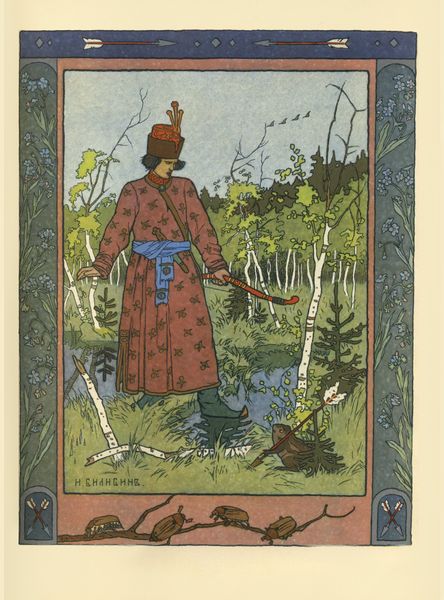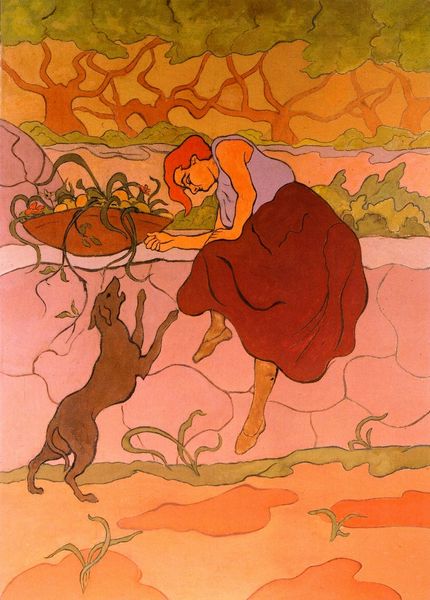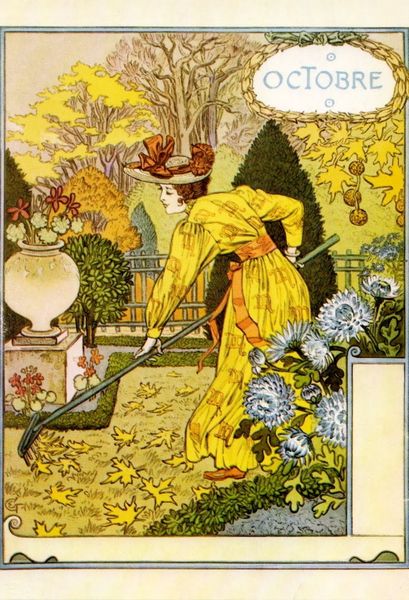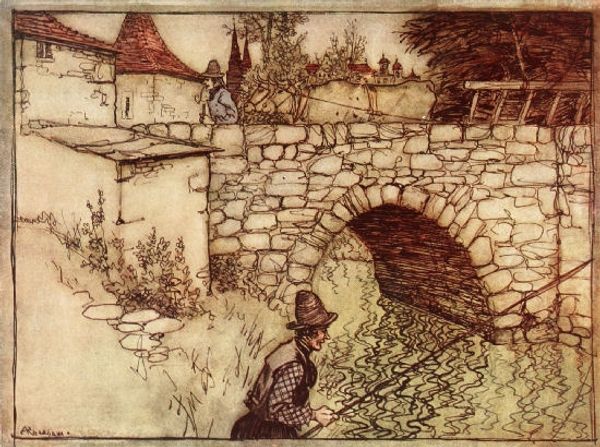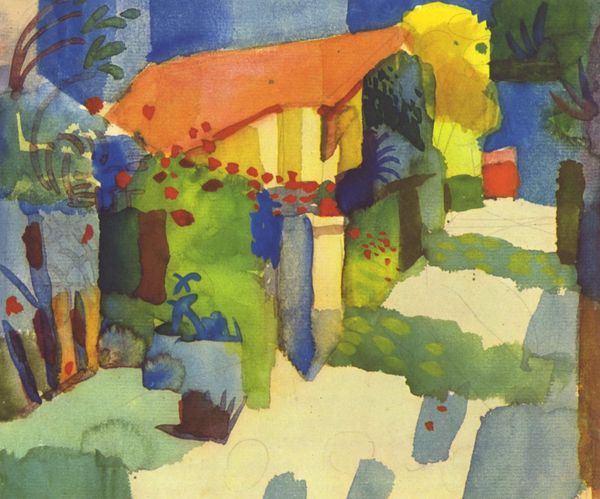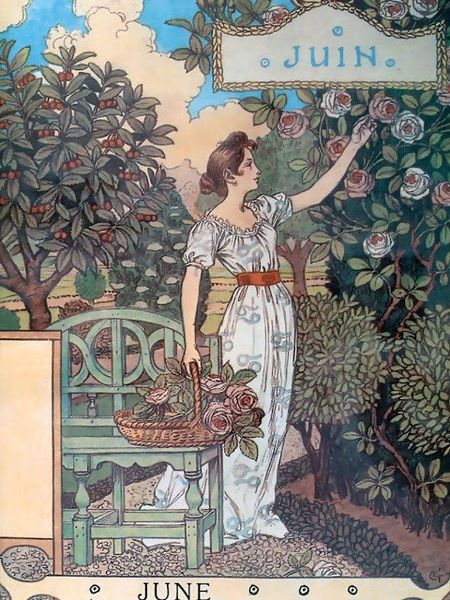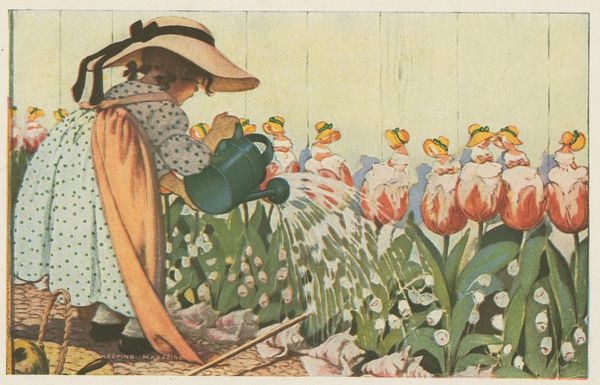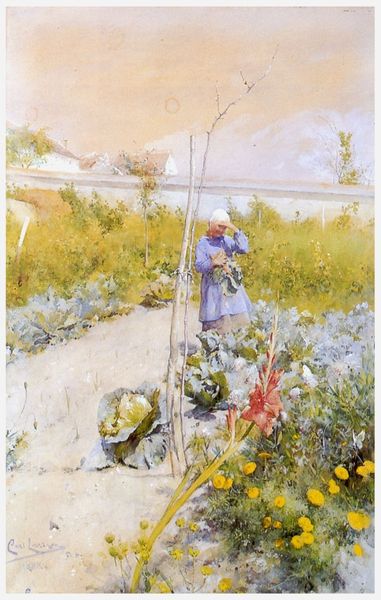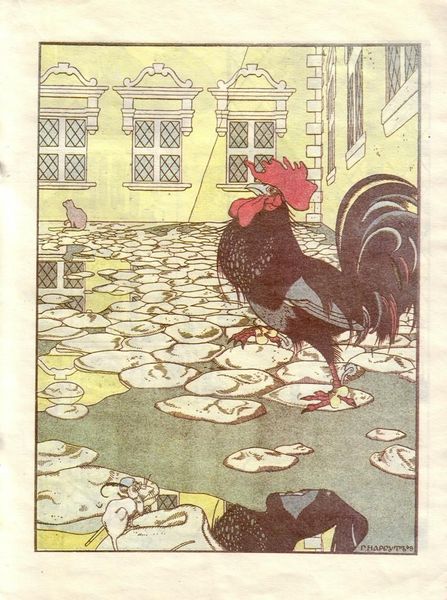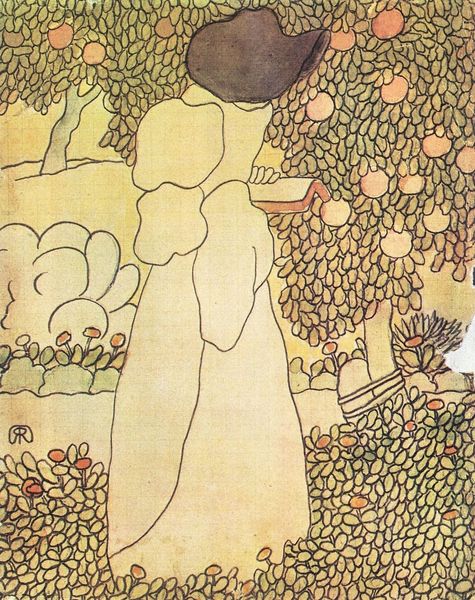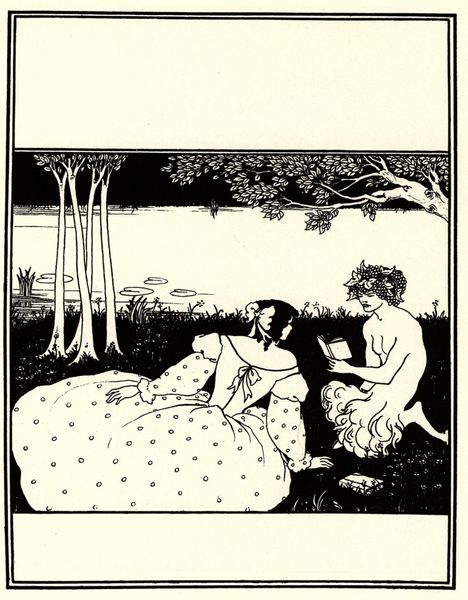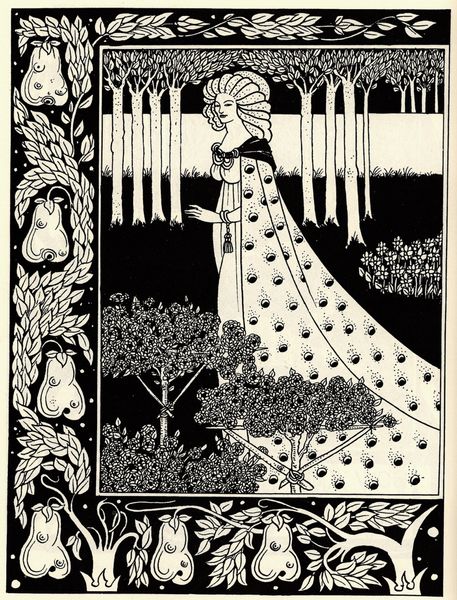
watercolor
#
art-nouveau
#
narrative-art
#
landscape
#
watercolor
#
naive art
#
art nouveau
#
watercolur painting
Copyright: Public domain US
Curator: Kay Nielsen’s watercolor and ink work, “In Powder and Crinoline” from 1912 is just brimming with fairytale charm. What strikes you first about it? Editor: An immediate whimsical air and dreamy quaintness—and so many cabbages. This abundance, juxtaposed with the rather forlorn figure, evokes a curious blend of prosperity and unease. Curator: Nielsen's really got this amazing way of merging the idyllic with the melancholic, doesn’t he? Those Art Nouveau lines almost seem to dance, yet there's something quite static about the scene. Maybe it's her stance? Editor: Precisely. The woman’s attire and presentation hints at the time, suggesting rigid social structures where appearance and performativity were central. I'm intrigued by the sartorial symbolism – the stripes are perhaps about constraints? The patch, economic realities? Curator: Oh, interesting perspective! For me, that mismatched look has something to do with make-believe, where rules can be twisted. It all makes it more childlike! And then we've got the hen... is she another part of her fantasy world, do you think? Editor: Well, folklore traditionally frames women, and animals like chickens as intrinsically linked to domestic space and labour. Consider this narrative through gendered power dynamics and the historical exclusion of women artists and writers, especially from canonized representations of female life. What message is conveyed by having that character just linger nearby? Curator: That makes me rethink her whole bearing in front of those cabbages – this garden setting turns her into someone else altogether. Almost theatrical, perhaps? Like she's acting. Editor: This resonates – what appears to be 'naive art' at first glance offers a much deeper interrogation of identity when looked through a critical, feminist lens. These fairytale elements also invite discussion of cultural ideals related to female identity and social mobility, themes that recur in much folk art! Curator: Absolutely! I'm glad this sparked those considerations in you, because in many ways the layers hidden inside Kay Nielsen's piece continue to evolve with how we experience its narratives! Editor: Me too—it's a nice way of recontextualizing such a quaint painting, isn’t it? Thank you for letting me join your audience, and your amazing work!
Comments
No comments
Be the first to comment and join the conversation on the ultimate creative platform.

